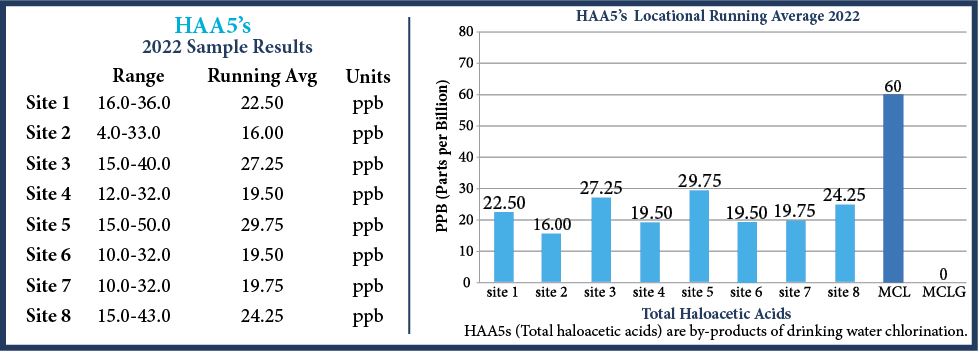Radiological, Coliform Bacteria, Cryptosporidium, and Organic Contaminants
Radiological
Certain naturally occurring minerals are radioactive and may emit a form of radiation known as alpha radiation. Typical sources include, oil and gas drilling operations, as well as mining activities. MUB’s most recent testing, conducted in 2019, for alpha activity and Radium 226 & Radium 228 , were below detectable limits.
Coliform Bacteria - Coliform bacteria is generally thought of as an indicator bacteria. Its presence may indicate that other potentially harmful bacteria may be present. Of the 840 samples taken during 2022, all showed 0% presence of Coliform bacteria.
Cryptosporidium - The Morgantown Utility Board is required under the Long Term 2 Enhanced Surface Water Treatment Rule (LT2) to sample and analyze our drinking water source (raw water) for bacteriologic contaminants. Under the first round of this rule, during 2008 and 2009, we sampled monthly for Cryptosporidium, a protozoan that can cause gastrointestinal illness. The second round of sampling under the LT2 rule was started in September 2015 and concluded in October 2017. Our results have shown only 1 (one) occurrence of this contaminant, in our source water, during the 24 month sampling interval. It should be noted that this data indicates only a minute and isolated presence of crypto in the raw water. Our treatment system uses a multi-barrier approach, including granular and membrane filtration. Membrane filtration provides a positive physical barrier to these pathogens, ensuring their removal so that the finished drinking water meets all federal and state criteria. A full list of results for this sampling can be found at https://mub.org/ccr/crypto.
Organic Contaminants - Organic chemical contaminants, including synthetic and volatile organic chemicals, may be by-products of industrial processes and petroleum production. They may also come from gas stations, urban storm water runoff and septic tanks.
Total Organic Carbon - Total organic carbon is naturally present in the environment. Our finished water average for 2022 averaged 1.80 mg/l.
Regulated Volatile Organic Contaminants -All regulated VOCs required to be tested for were found to be Non Detectable for the 2022 analysis. Data from this analysis can be found at https://mub.org/ccr/2022voc.
Regulated Synthetic Organic Contaminants (Pesticides, PCBs, Herbicides, etc.) - Regulated synthetic organic chemicals are tested twice every 3 years. Our latest analysis, done during the 2021 year, showed that all chemicals analyzed for were non-detectable. The next scheduled sampling will be in 2024. Data from the latest analysis can be found at https://mub.org/ccr/2021soc.
Stage 2 THMs and HAA5s - Stage 2 sampling for Trihalomethanes ( THM’s ) and Haloacetic Acids ( HAA5’s ), began in 2012. sampling and reporting now consists of 8 separate sites and a running 4 quarter average for each individual site. MUB is in full compliance, at all sample locations, with the regulatory limits established by the EPA of 80 ppb for TTHMs and 60 ppb for HAA5s.

Some people who drink water containing trihalomethanes in excess of the MCL over many years may experience problems with their liver, kidneys, or nervous system, and may have an increased risk of getting cancer.
